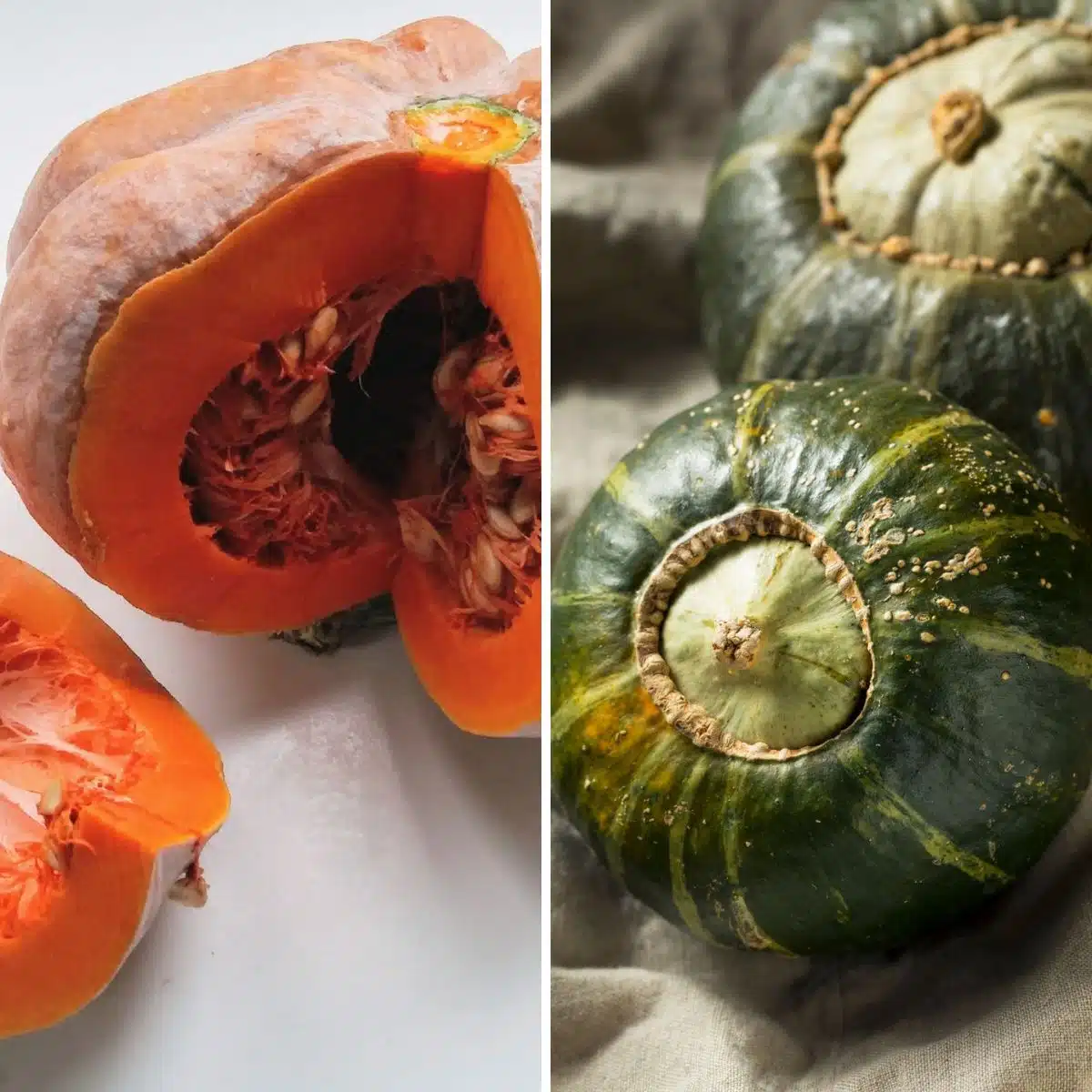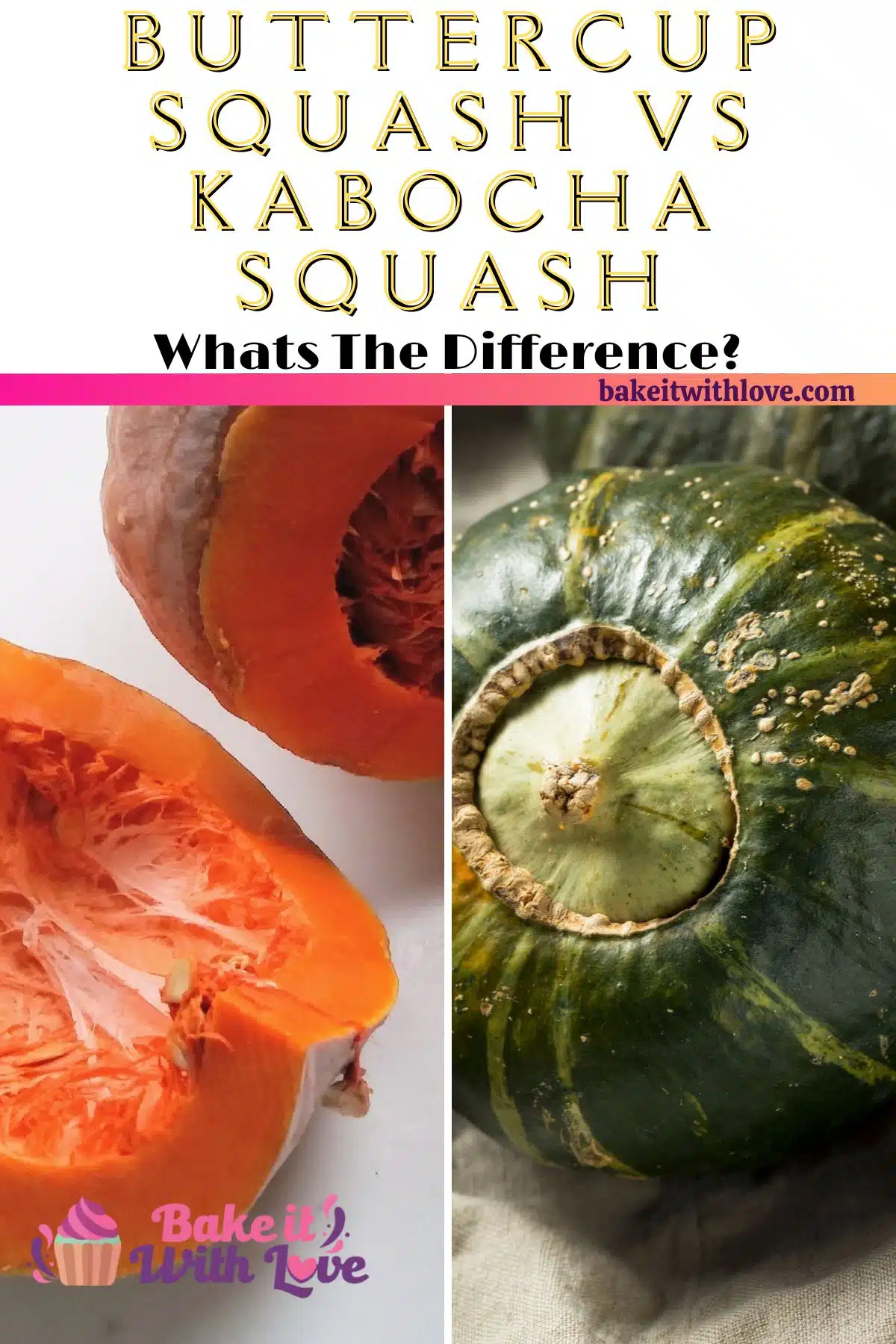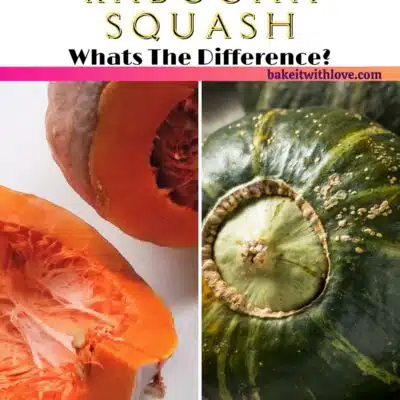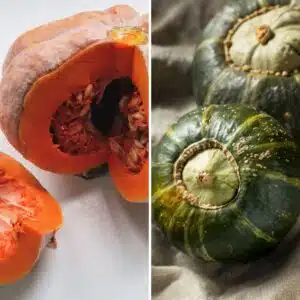Buttercup squash vs kabocha squash: A complete guide to the differences and similarities between these unique and delicious winter squashes! Don't worry if you don't know how to tell them apart, many people think they look exactly the same! Keep reading to learn everything you need about buttercup and kabocha squash and how to cook them properly!
Comparing Buttercup Squash To Kabocha Squash
If you are curious to know what makes buttercup squash and kabocha squash different, this guide covers it all! It is common to see both terms being used interchangeably since their appearance and taste are similar.
Both of these vegetables will bring a unique and elevated addition to your meals and are a delightful change from using other common winter squashes! Learn how to tell them apart, where to buy them, and the best cooking methods to make them into a wonderful side dish to serve at family dinner!

Jump to:
What Is Buttercup Squash
The butternut squash (or turban squash) is a variety of winter squash from the family Cucurbitaceae and the species Cucurbita maxima. This type of squash has a dark green rind with light grey vertical lines.
The buttercup's dense flesh is typically a dark orange-yellow hue, but sometimes can even be a deep reddish color. It has a sweet, nutty, and buttery taste and a consistency that resembles a baked sweet potato.
What Is Kabocha Squash
A kabocha squash (or Japanese squash) is a sweet fleshed and medium-sized winter squash that is also from the species Cucurbita maxima. It has a dark green exterior that is dull, tough, and knobby-looking.
The flesh is bright yellow-orange, light, fluffy, and has a smooth velvety texture! Kabocha squash tastes like the cross between a sweet potato and a pumpkin. It has a sweet, earthy, and hearty flavor!
Best Cooking Methods
Steaming and baking are the preferred cooking methods for buttercup squash and kabocha squash because their flesh tends to be on the drier side. These methods help bring out the sweetness of the flesh and will add moisture to it as well.
Buttercup squash can be prepared in many different ways! You can top them off with butter, brown sugar, cinnamon, and a drizzle of maple syrup. The flesh can be used in soups, pies, muffins, or as a puree to add to dishes that call for sweet potato.
Kabocha squash is great to use in curry and as a base for tempura-fried vegetables due to the firm texture of this squash's flesh. It also is delicious in stews and pies! Kabocha squash can be used in place of butternut squash, acorn squash, or pumpkin in recipes.
Where To Buy
You will be able to find buttercup and kabocha squash at large grocery stores and local farmer's markets. You might also find them at any healthy grocery stores that sell organic and natural produce!
When searching for a buttercup or kabocha squash, look for one that feels heavy compared to its size and is free of any blemishes, soft or moldy spots, and wrinkles. You'll want one that has a deeply colored rind. *These tips also apply to any other type of squash too!
Kabocha squash has a peak season that starts in the late summer and lasts through the entire winter. Buttercup squash's peak season is from the early fall to the end of winter.
You can find these vegetables year-round, however, for the best flavor results, try them during their peak seasons!
>>>>See all of my recipes here<<<<
Buttercup Vs Kabocha
Even though these two vegetables share a lot of similarities, the shape and flesh color of the two are what sets them apart. Buttercup squash is larger and more square in shape and the exterior is much smoother than a kabocha.
Also, the flesh of the Kabocha squash is drier and has a deeper yellow-orange color versus the bright yellow color of a buttercup.
🥡 Storing
Once these vegetables are cut, you can store them in a resealable bag and place them in the fridge for up to 3-4 days. Frozen cooked squash will last in the freezer for up to 3 months when stored in an airtight freezer container.
You can store a buttercup squash for up to 3 months when stored in a cool and dark place. Kabocha squash can be stored for up to 1 month.
Now you know everything about these two delicious vegetables! Have you cooked them before and which one are you a fan of? Leave a comment down below to let me know!

📖 More Helpful Food Guides
- Grill Temperature Guide - This ultimate guide covers all of the perfect temperatures needed to cook your favorite grilled dishes!
- How Long To Boil Potatoes - Learn how long you need to boil potatoes so that you get perfectly cooked potatoes every time!
- How To Cook Canned Carrots - I cover different methods to make this simple, healthy, and delicious vegetable side dish!
- Cornmeal vs Polenta - This guide covers everything about these two common foods that are served in different ways!
- What Is Orange Roughy - Learn how to cook this fish, where you can buy it, and what it tastes like!
- How Does A Chicken Breast Weigh - I cover all of the different factors that will affect a chicken breast's weight!
Do you love a recipe you tried? Please leave a 5-star 🌟rating in the recipe card below and/or a review in the comments section further down the page.
Stay in touch with me through social media @ Pinterest, Facebook, Instagram, or Twitter! Subscribe to the newsletter today (no spam, I promise)! Don't forget to tag me when you try one of my recipes!
📖 Recipe Card
Buttercup Squash vs Kabocha Squash: Baked Buttercup Squash (+Tips, Tricks & More!)
Ingredients
- 1 lb buttercup squash (1 small squash, halved and seeds removed)
- 1 cup apples (cored and chopped semi-sweet apples)
- ½ teaspoon Kosher salt
- ¼ teaspoon pumpkin pie spice (or cinnamon)
- 2 tablespoon butter
- 2 tablespoon honey
(Note: 2x or 3x only changes the ingredient list)
Instructions
- Preheat your oven to 400°F (205°C) and cut your buttercup squash in half carefully. Remove the seeds and place each top and bottom half of the squash into a 9x13 baking dish.
- Chop the apple(s) and toss with salt and pumpkin pie spice then transfer into the squash halves. Place a tablespoon pat of butter onto each squash with apples, then drizzle each with 1 tablespoon of honey.
- Bake at 400°F (205°C) for 35-40 minutes or until your apples and squash are tender. *If the apples start to get too toasty and browned, place a sheet of aluminum foil over your dish.
- Remove from the oven and serve immediately when done.
Notes
- Use 1 large apple or 2 smaller apples. A tart or semi-sweet apple variety with a firm texture is best for baking. Braeburn, Gala, Granny Smith, Pink Lady, McIntosh, Empire, Cortland, and Jonagold are great apples for this recipe.
- The pumpkin pie spice can be swapped for apple pie spice or a mixture of cinnamon and a pinch of freshly grated nutmeg.



Comments
No Comments